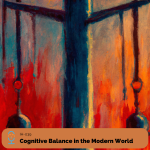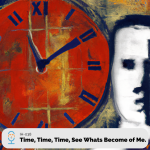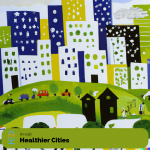
Cognitive Balance in the Modern World
How do our little primate brains keep up with technology moving at light speed? Would we dig into our beliefs so deeply that we would “die on a hill?” What happens when technology moves so quickly that it moves your hill? What happens to medical ethics when we move toward immortality? Do we end with any answers? Or is it just turtles all the way down?
Summary
In this conversation, Matt and Tom discuss various topics, including health and fitness challenges, excessive screen time, the addictive nature of social media, and the difficulty of changing someone’s opinion. They also explore the complexity of right and wrong, the limitations of perception and reality, and the importance of personal values. The conversation highlights the need for balance, critical thinking, and open-mindedness in navigating the modern world. The conversation explores the topic of medical ethics in the context of technological advancements and the potential to print organs and edit genes. The discussion highlights the different perspectives on medical ethics and the challenges of funding life-saving procedures. It raises questions about the need to rethink current medical ethics in a rapidly evolving world. The conversation also touches on the impact of wealth on access to medical procedures and the role of dosage in ethical considerations. Overall, the conversation emphasizes the importance of considering the ethical implications of new technologies and the need for a more equitable approach to healthcare. The conversation delves into the ethical and regulatory challenges surrounding emerging health technologies. It explores the need to anticipate the future and adapt to rapid advancements. The fragility of the current system and the class divide in accessing life-extending technologies are also discussed. The conversation then shifts to the democratization of health technologies through crowdfunding. The hosts share their interest in cold plunge tubs and the challenges of cold exposure. Finally, the conversation touches on the intersection of health and technology, including temperature monitoring and privacy concerns.
Takeaways
Finding ways to incorporate exercise into everyday activities can help maintain fitness levels.
Excessive screen time can negatively impact family time and personal well-being.
Educational content on social media platforms can be valuable, but it is important to be mindful of the addictive nature of these platforms.
Changing someone’s opinion is challenging, and it is important to approach conversations with empathy and understanding.
Personal values and critical thinking play a crucial role in navigating the complexities of right and wrong. Medical ethics should be reevaluated in light of rapid technological advancements.
Access to life-saving procedures should not be determined solely by wealth.
The dosage and context of a treatment can impact its ethical considerations.
The potential of organ printing and genetic editing raises new ethical questions.
A more equitable approach to healthcare is necessary in a changing world. Ethical considerations and regulations play a crucial role in the development and implementation of health technologies.
Anticipating the future and adapting to rapid advancements is essential in the ever-changing landscape of technology.
The current system is fragile and perpetuates a class divide in accessing life-extending technologies.
Crowdfunding has the potential to democratize health technologies and make them more accessible to the general public.
Cold plunge tubs and cold exposure have gained interest for their potential health benefits.
The intersection of health and technology raises concerns about privacy and the monitoring of personal data.
Chapters
00:00 Introduction and Missed Opportunities
00:35 Health and Fitness Challenges
01:50 Finding Exercise in Everyday Activities
03:09 Dealing with Lingering Illness
04:19 Recommendations for TV Shows and Cartoons
07:11 Excessive Screen Time and Family Time
08:31 The Importance of Educational Content
10:19 The Influence of Social Media Platforms
13:32 The Addictive Nature of Social Media
17:00 The Difficulty of Changing Someone’s Opinion
19:12 The Complexity of Right and Wrong
23:26 The Limitations of Perception and Reality
25:15 Navigating Differences in Political Views
27:45 The Importance of Personal Values
28:37 Recognizing Harmful Behavior Patterns
29:08 Medical Ethics and Different Perspectives
32:43 The Dilemma of Funding Life-Saving Procedures
36:36 The Impact of Wealth on Access to Medical Procedures
39:10 The Need to Rethink Medical Ethics
45:01 The Rapid Pace of Technological Advancements
53:11 The Potential of Organ Printing and Genetic Editing
59:11 Reevaluating Medical Ethics in a Changing World
01:02:00 The Marketing Strategy of Embracing the Truth
01:03:23 The Role of Dosage in Ethics
01:03:49 Ethics and Regulations
01:05:22 Anticipating the Future
01:06:18 The Radical Leap of Technology
01:07:36 The Class Divide in Health Technologies
01:08:57 The Fragility of the Current System
01:10:41 The Ultimate Class War
01:11:03 Crowdfunding and Democratization
01:12:18 Exploring Cold Plunge Tubs
01:13:48 The Challenge of Cold Exposure
01:16:05 The Intersection of Health and Technology
01:18:26 Temperature Monitoring and Privacy
Podcast: Play in new window | Download








